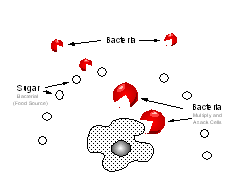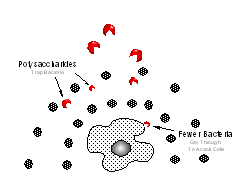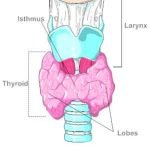A small group of very special carbohydrates called mucopolysaccharides actually work to prevent bacteria and viruses from finding binding sites on the cells of your body. In fact, they literally trap and destroy them.
In order to understand the role that super saccharides (complex sugars) play in our body and how they benefit the immune system, it is necessary to touch on a little biochemistry. Don’t worry; we’ll stick to the basics.
Carbohydrates
All biological processes in the human body are effected through four main groups of biologically active molecules. These four groups are: fats, proteins, nucleic acids (RNA & DNA), and carbohydrates. In this report, our focus is on the carbohydrates.
Essentially, carbohydrates are compounds containing carbon, hydrogen and oxygen in the proportions 6:12:6. They are burned during metabolism to produce energy, liberating carbon dioxide (CO2) and water (H2O). The carbohydrates in the human diet can be divided into three groups:
- Monosaccharides, e.g. glucose, fructose, galactose;
- Disaccharides, e.g. sucrose (table sugar), lactose, maltose;
- Polysaccharides, which are linear or branched polymers of monosaccharide units linked by glycosidic bonds and include starch, glycogen (animal starch), and fiber/cellulose.
At one time, carbohydrates were thought to serve mainly as an energy source for the body, but it is now recognized that many carbohydrates play key roles in enhancing immune function and in facilitating cellular communication.
Carbohydrates and the Immune System
Most cells in the body have carbohydrate molecules on their surface. These carbohydrates are often attached to proteins or to fats and act as receptors for bacteria, viruses, or antibodies. The invaders actually use these sugars as fuel to grow, multiply, and attack the cell itself.

A small group of very special carbohydrates called mucopolysaccharides, however, actually work to prevent bacteria and viruses from finding binding sites. In fact, they literally trap and destroy them. In addition, they also work to trap and destroy antibodies; thus halting infection caused disease and autoimmune diseases in their tracks.

Mucopolysaccharides to Enhance the Immune System
Mucopolysaccharides, now more commonly called glycosamino-glycans, are a special form of polysaccharide. They are made in the human body and perform many key functions in our health, including promoting growth and enhancing the immune system. Unfortunately, after puberty we cease manufacturing these polysaccharides and must obtain them from outside sources.
Mucopolysaccharides are found in many of the foods that we call “miracle foods” including: aloe vera, medicinal mushrooms, and nutritional yeast. Since we have already discussed the benefits of the mucopolysaccharides found in the medicinal mushrooms (reishi, maitake, and cordyceps) in the Barron Report on Immunity Plus, in this report we will focus on the super saccharides found in aloe vera and nutritional yeast.
The Power of Aloe Vera
Aloe vera is an amazing mixture of more than 200 constituents, including polysaccharides, enzymes, glycoproteins, amino acids, vitamins and minerals. Although aloe is almost legendary for its healing and regenerative powers, it’s true potential was merely waiting to be tapped. The problem has always been that aloe’s key active ingredients were so diluted in liquids and gels and so destroyed in processing (especially in dried aloe concentrates) that only tiny amounts were ever available for use by the human body. It is almost miraculous that even with these limitations, aloe was as effective as it was. It is only within the last decade, however, that scientists have learned how to concentrate the active ingredients in aloe to levels far, far, far beyond what was possible before – while at the same time preserving the integrity of the key ingredients. And then, within just the last year, that process has been significantly enhanced to almost unimaginable levels; and that’s why we’re talking about aloe today.
The active polysaccharide fractions in aloe are called galacto-mannans or beta-glucomannans. These polysaccharides have been shown in laboratory studies to act as a bridge between foreign proteins (such as virus particles) and macrophage cells in the human body, facilitating the destruction of the invading the protein by the macrophage. Activating the receptor sites of the macrophages is also a key to the overall boosting of cell-mediated immunity, which, significantly, is deficient in HIV infection and other immune disorders. In addition, aloe polysaccharides also protect the bone marrow from damage by toxic chemicals and drugs.
These various effects, while seemingly widespread and unrelated, are in fact due to one simple process that occurs at the cell membrane. Acemannan (the name often used for aloe beta-glucomannans, acetylated polymannans and mucopolysaccharides) is a long chain sugar that interjects itself into all cell membranes. This results in an increase in the fluidity and permeability of the membranes allowing toxins to flow out of the cell more easily and nutrients to enter the cell more easily. This results in improved cellular metabolism throughout the body and an overall boost in energy production.
Following are a few of the vital functions Acemannan and the other constituents of aloe have been found to perform. They…
- Make cells more resistant to viruses and pathogenic bacteria, by incorporating themselves into cell walls
- Improve overall cellular metabolism and functioning
- Reduce inflammation
- Provide critical lubrication of joints; helping to prevent arthritis and to heal it once it has developed
- Aid in the absorption of water, minerals and nutrients in the GI tract
- Reduce pain
- Improve vascular flow
- Reduce scarring
- Improve macrophage activity as much as tenfold
- Enhance macrophage effectiveness in modulating the entire immune system
- Enhance macrophage effectiveness in stimulating, producing, and releasing antibodies
- Increase the body’s own production of interferon, interleukins
- Increase the number of antibody forming T-cells in the spleen
- Increase the number and activity of killer T-cell and increase monocyte activity
- Fight fungal infections, such as: Athlete’s foot, Ringworm, Pruritus anivalvae, Balnea, Essential Pruritus, and Vaginal yeast infections
- Help heal athletic injuries such as: Muscle cramps, Sprains, Strains, Bruises, Swelling, Soreness, Tendonitis, and Bursitis.
- Soothe and promote the healing of intestinal disorders such as: Indigestion, Heartburn, Hyper-acidity, Peptic and Duodenal Ulcers, Colitis, and Hemorrhoids
- Promote the healing of kidney disorders
- Help with diabetes
- Kill parasites such as: Pinworms and Threadworms
- Speed wound healing by as much as 35%
- Reduce allergic reactions
- Stimulate bone marrow activity
- Stimulate fibroblasts to release collagen and elastin to make new tissue
The bottom line is that concentrated aloe fractions enhance the functioning of the entire immune system, detoxify the body, promote the repair of a wide range of tissues and organs, improve digestive functions, and help with the destruction and elimination of invading bacteria, viruses, and parasites.
Concentrated Acemannan in Aloe Vera
Traditionally, the problem with aloe vera products is that the key active ingredients, the mannan sugars, are not particularly concentrated in the aloe plant, and are not particularly stable. In addition, they are easily destroyed both in the harvesting process and in the concentration process. It is only in the last few years that these limitations have been overcome and supplements with meaningful amounts of mannan sugars have been produced. And now, a brand new proprietary process has been discovered that allows for the dehydration and concentration of aloe at low temperatures (never exceeding 100 degrees Fahrenheit). This is significant since it preserves the integrity of the mannan sugars – not to mention the enzyme activity of the aloe constituents. This process produces a product that contains all of the complex carbohydrates contained in whole aloe leaf at powerfully high levels of concentration – as high as 200:1.
Beta Glucans
Aloe vera is not the only source of beneficial mucopolysaccharides, and Acemannan is not the only super immune enhancer. Certain Beta glucans also qualify as “super saccharides.”
Oriental healers have known for hundreds of years that something inside yeast and mushrooms has the ability to dramatically enhance your immune system. Scientists have now identified that something as a long chain of polysaccharides called Beta glucans. In fact, the real discovery came when scientists discovered which particular kinds of glucans (Beta 1,3 and 1,6) provide most of the benefits.
Since the 1940’s, researchers have investigated the nutritional benefits of Beta glucans. Derived from the broken cell walls of yeast and from mushrooms, barley and oats. Beta glucans are capable of reducing unhealthy amounts of serum cholesterol and boosting the immune system. (Note: Beta glucan is the only glucan found effective in preventing coronary heart disease by significantly lowering LDL blood cholesterol and increasing HDL (good) cholesterol levels. In fact, the FDA has approved Beta glucan supplementation for preventing coronary heart disease.)
As just mentioned, Beta glucans are a powerful immune stimulator, activating the macrophages in the immune system. Keep in mind that your macrophages are your immune system’s first line of defense against viral, fungal, bacterial, and parasitic infections. In addition, macrophages play a major role in recognizing and eliminating aberrant (cancerous) cells from the body.
There have been over 1,000 research papers on Beta glucans since the 1960’s. Research backed by prestigious institutions such as the U.S. Food and Drug Administration, Harvard, Tulane, Baylor, McGill, University of California, Duke, Washington, the Armed Forces Radiology Research Institute, and other institutions all demonstrate the high immune activating properties and cholesterol lowering properties of Beta glucans.
Beta glucans have been clinically proven to enhance macrophage production dramatically, and to increase nonspecific host resistance to a variety of bacterial, fungal, and parasitic infections, including:
- Sinus Infections
- Allergies
- The common cold
- Chronic Fatigue Syndrome
- Lupus
- Fibromyalgia
- Arthritis
- Candida
- Diabetes
- Herpes
- Mononucleosis
- Osteoarthritis
In addition, “The broad spectrum of immunopharmacological activities of glucan includes not only the modification of certain bacterial, fungal, viral, and parasitic infections, but also inhibition of tumor growth.” Nicholas DiLuzio, Ph.D., Department of Physiology Tulane University School of Medicine. Which leads us to…
Cancer and AIDS
It is important to understand that although there are a number of animal studies and cell studies (and a great deal of anecdotal evidence) available that indicate that “super saccharides” may play a significant role in protecting against cancer and AIDS; there are NO significant, valid human studies that prove this to be so at this time.
For example, if you search on the Internet, you will find references to remarkable studies by Drs. McDaniel and McAnalley concerning the effect of aloe fractions on the status of patients with ARC (AIDS Related Complex). They gave the polysaccharide fraction of aloe orally (250 milligrams four times a day) to 8 patients with ARC, with Walter Reed staging from 3 to 6. Eight of eight patients showed improvement within 90 days of therapy with an average reduction of 2 Walter Reed stages.
The problem is that as exciting as these studies are (and as frequently cited as they are), they were conducted on too small a group of patients and without proper controls, which makes their results merely interesting, not proven.
The bottom line is that you certainly have nothing to lose by supplementing with “super saccharides” if you are concerned about cancer or AIDS, but again, understand, nothing is proven – yet.
Usage
The normal recommended dosage for concentrated aloe fractions ranges between 450-1,000 mg a day. The recommended dosage for Beta glucans runs the gamut from 20 to 500 mg a day. However, when you combine the two, they work together and reinforce each other.
My recommended dosage is 500 mg of concentrated aloe fractions a day, along with 20 mg of Beta glucans for maintenance purposes. Double it if you wish to use the combination more aggressively.
Warning
There is really only one minor warning. Concentrated aloe fractions can stimulate increased bowel function (a good thing), but it’s recommended that you start slowly and increase your intake of these fractions gradually to avoid intestinal cramping.
—
Find out more about Jon Barron’s formulas and where to find them at our product recommendation page: /products












Sir,you have covered all the
Sir,you have covered all the information about Aloe vera.How many days it will take to see the results of aloe vera intake? what is the quantity? these things are required to use the aloe vera.
The answers to those
The answers to those questions depend on the form and concentration of the aloe you take – liquid aloe gel, concentrated high acemannan powder, etc. Different products equal different instructions and different timing on results. Directions for taking the aloe will be provided by the manufacturer you buy your product from. If you’re looking for a concentrated acemannan powder, Jon recommends MPS-Gold 100 from healthbreakthroughs.net.
In literature u write a dose
In literature u write a dose aloe vera [450-1000mg] but not write according to body weight.
U should write along with body weight, as:450-1000mg/kg body weight.
I have found that stabilized
I have found that stabilized powder was the best form for my colitis. I tried a few products including Aloeworx and digestaqure. The Aloeworx has been my preference for the last 2 years and i wouldnt miss a day. hope this can help someone in need.
Marybeth Koogen,55
Houston, TX
Excellent article on my
Excellent article on my favorite plant! As you touched on, aloe vera works extremely well for hemorrhoids. I have for years grown aloe and would use it topically along with hemrid. As soon as i applied it i felt noticeably better. There are currently drinks out there that are aloe infused. I tried one i picked up at a convenience store in Long Island NY and it was delicious, albeit pricey.
I bought an aloe leaf and I
I bought an aloe leaf and I add it to my vegetable smoothie each day. Is that effective?
I have lots of the Aloe Vera
I have lots of the Aloe Vera plant in my backyard – how would I use the live plant to get the benefits? I blend it with water or freshly squeezed OJ but I read somewhere that blending will break up the polysaccharide chains. Any advice?
Thanks for the info
Never mix a potted aloe plant
Never mix a potted aloe plant with water to Drink !!!
And then a little planned that we use for drinking should be growing in the desert with real son and real soil and should have at least grown for five years. Five years of sun and minerals from the ground in the desert will make the difference.
The aloe plant that you have at home …ONLY for topical use!!!
I have been using at least a
I have been using at least a pound of fresh aloe vera gel per day in my morning smoothie. I get a shipment of fresh leaves every month via UPS from Aloe Labs, an aloe farm in Texas. Is it better to use the fresh gel with all the oxygen intact, or the processed product? Thanks.
I read the article at:
I read the article at:
http://knowledgehound.com/khhow2s/how_to_juice_aloe.htm”
and should add that the aloe I use is recommended for internal use, and I peel the skin off, just using the gel. There are different strains, but the aloe from Aloe labs is used for making the bottled products for consumption.
The problem with bottled aloe is it’s heat treated and often watered down and adulterated with other things. And I can’t imagine that the high oxygen content is preserved in the bottling process. Our atmosphere is depleted of oxygen now, so I would think the fresh gel would be a good way to get oxygen into the body, though I have not been able to find any info about that.
How do you think the aloe products processed in new way that you’ve described would compare to ingesting the fresh aloe gel?
I spend about $50 a month on each aloe shipment from Aloe labs, and it’s a lot of work making an aloe smoothie each AM, so I would like to try your product and see how it feels, but I’m wondering if I will miss the oxygen factor.
Thanks!
You may not want to consider
You may not want to consider the following information when processing and using your own aloe leaves.http://knowledgehound.com/khhow2s/how_to_juice_aloe.htm
see reply above: "You may
see reply above: "You may not want to consider the following information when processing and using your own aloe leaves. http://knowledgehound.com/khhow2s/how_to_juice_aloe.htm"
I know some of your products
I know some of your products contain both aloe vera and activated barley (a source for beta glucans). Since you have added the MPS Gold-100 to your list of product recommendations, do you also have a recommendation for concentrated beta glucans? I seem to be stuck on the idea of using them together and reinforcing their benefits. Am I already getting the recommend amount of beta glucans in one of your suppliments?
Jon has not provided any
Jon has not provided any specific recommendation for a dedicated beta glucan supplement.
After many stomach and bowel
After many stomach and bowel issues over the years, a friend began to talk to me about reishi mushrooms and also aloe vera. It hasnt not healed me fully, but has made it possible for me to live and not be miserable all the time. I have reccomended this to so many people and all have told me of the difference those two things have made in their life. I buy an aloe made by Warren Labs and it is called Johnsons aloe. and wowow, it doesnt taste bad, and is processed differently, so it looks and tastes like water.. I can only tell you, this particular aloe has helped me more than any of the others, I even can take way less of it. I began to buy products from a company called Serenigy, and I can only tell you that within days you can see a difference. Its all made with ganoderma lucidum, whichi s reishi mushrooms in it. Have any of you tried this products and want to discuss them? Also would like to know what Dr. Baron things of these particular products. Just curious. Thanks for all the information that you send out. Its incredible….
Hi Jon,
Hi Jon,
I appreciate your article, however, do you have research to back up these claims. If so, please email them to me.
Thank you,
Rich
Hi Rich,
Hi Rich,
There’s mountains of research on the immune related benefits of aloe’s key bio-chemicals and beta-glucans, but this should get you started.
There’s only one company that
There’s only one company that has a patented process for keeping bottled Aloe vera fresh like it just came from the plant. It’s also important that this company owns 85% of the world’s Aloe Vera, the gel is stabilized and bottled within 4 hours after being harvested from the plant. You can find more information about this on my homepage.